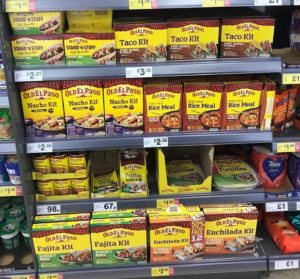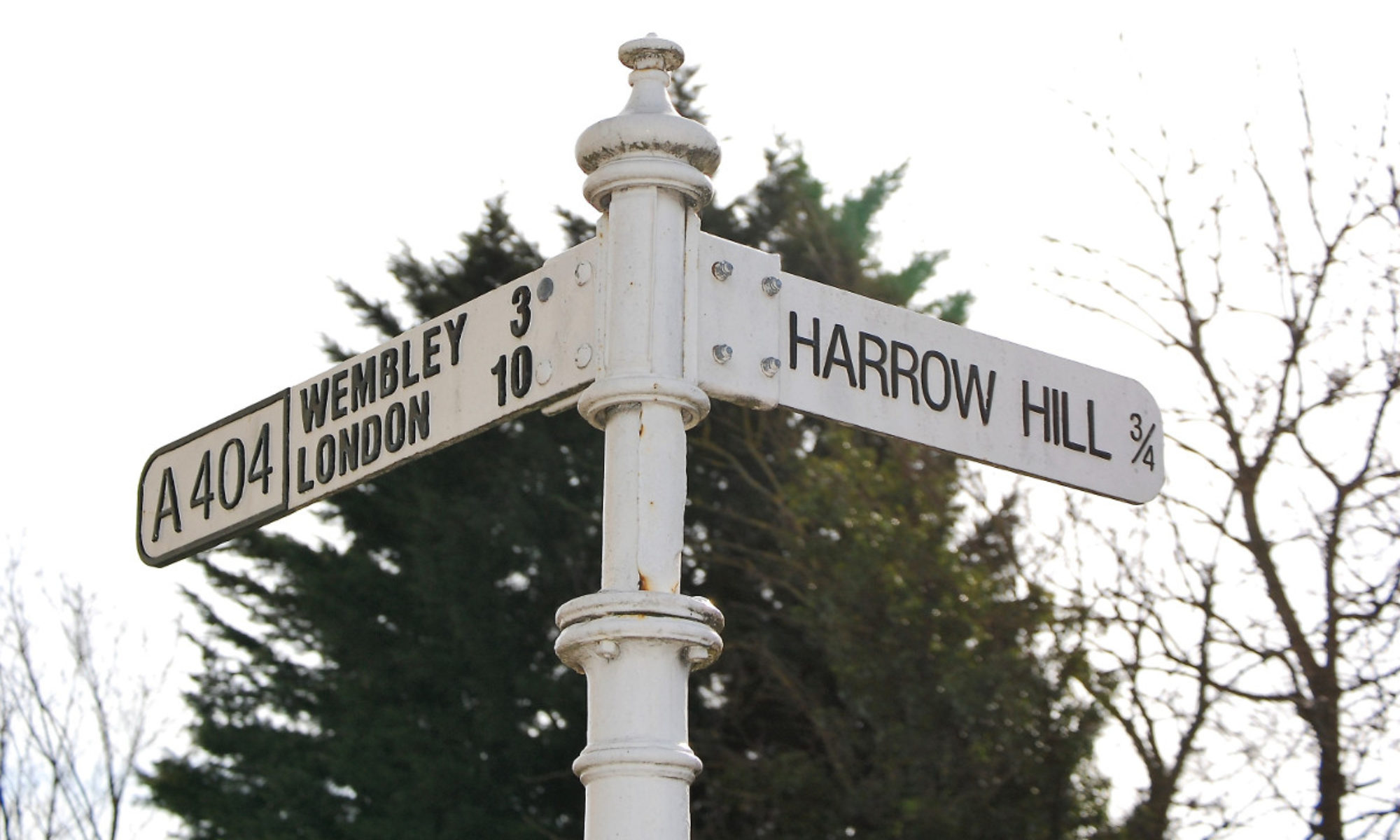I made my first foray into British grocery shopping very shortly after we arrived. If we wanted to eat and avoid eating at a restaurant for every meal, we needed food and supplies for our temporary accommodations. Iceland was very close, so that was my first stop. It’s somewhat of a specialty store in that they sell predominantly frozen foods and have only a small assortment of other items. That was fine as we only had a small assortment of pots, pans, and utensils at our disposal anyway.
The first challenge was figuring out the shopping carts—they’re chained together. It took a few moments, but we figured out that to use one you put a pound coin in the slot and push it in to release one cart from the others. You get your coin back when you return the cart and reattach it to the rest. The big upside to that system is that there aren’t carts strewn about the parking lot threatening to roll into your car—just be sure to keep a pound coin handy.
It didn’t take long for me to realize that this was going to be a whole new shopping experience and not just because most things were frozen. They sell different things, use different words for things, and arrange things completely differently. English muffins are crumpets—well, sort of but not really. The English muffin is not English at all. Scones are a lot like biscuits, but to the British biscuits are cookies. Fries are chips, chips are crisps, and dessert is pudding—which may or may not be actual pudding. There are courgettes and aubergines in the produce department instead of zucchini and eggplant. Eggs aren’t refrigerated. While most American grocers have an entire aisle dedicated to breakfast cereals from Apple Jacks to Wheaties, British stores have a much smaller section dominated by things like porridge, oats, muesli, granola, and a few cereals like corn flakes, Weetabix (like Shredded Wheat), Cheerios, and Rice Krispies.
Everything is in grams and liters, which might not seem like a big deal since you can see the size of the item you’re buying, except that, like in the US, there’s often a lot of air space in the package making it look like more than it is. Understanding how many servings are in something can be a challenge. We shared a single portion for a couple meals before I got the hang of it. Bizarrely, milk lists how many liters and pints—no quarts or gallons though. And forget deciphering nutrition information. How many calories in a kilojoule? Anyone?
Of course, prices are in pounds and pence. Which makes everything seem less expensive until you do the math. Although, we were pleasantly surprised by prices. Overall, they’re similar to what we’re used to. Some things are more expensive, but that’s offset by other items that are less expensive. Cereal is remarkably less expensive here, especially American brands like Kellogg’s (which doesn’t make sense, but we’re not complaining). Pasta imported from Italy is downright cheap (which does make sense). Bread costs a little less. Dried herbs and spices are much less expensive, but vanilla extract is quite dear.
We were amused to come across a “Mexican food” section. It was  an Old El Paso display with some Uncle Ben’s Mexican Rice on the side. Other than tortillas and refried beans, we’d never seen any of these items for sale in US stores or on the menus of Mexican restaurants—smoky BBQ flavor fajitas and sweet paprika and garlic tacos. Huh? I passed on that section entirely.
an Old El Paso display with some Uncle Ben’s Mexican Rice on the side. Other than tortillas and refried beans, we’d never seen any of these items for sale in US stores or on the menus of Mexican restaurants—smoky BBQ flavor fajitas and sweet paprika and garlic tacos. Huh? I passed on that section entirely.
After making my way through the aisles and filling the basket, I headed for the checkout line—er, queue. We didn’t have a British bank account yet, so I paid with an American bank card, which elicited a reaction somewhat like paying with a stack of coupons and loose change in an American store. It takes longer, confuses the cashier, and annoys everyone behind you. All because the US doesn’t have the chip and PIN system but instead requires signing and presenting the card for the cashier to compare signatures. Old school, cumbersome, and super fun to juggle while bagging groceries. Did I mention that there are no baggers here? You bag your own groceries in your own bags (or buy reusable bags from the cashier and bring them next time).
One of the biggest differences we’ve been happy to get used to is how fresh the food is and how few preservatives are used. They aren’t kidding about “best by” dates here. It’s hard to buy anything that will last more than three to five days. Bread will be moldy the morning after its “best by” date. Salad will be wilted, and grapes will be soft. Between that and smaller fridges, shopping twice a week is necessary.
Which leads me to my favorite discovery, they all deliver! If you spend more than £20 at Iceland, they’ll deliver it to your home for free. The large, regular retail grocers have online ordering and delivery—similar to what’s available in the US, which I stupidly never took advantage of because I wanted to pick out my own produce and didn’t want to have to be home at a specific time for a delivery. I know better now.
I’ve learned a lot since that first shopping trip. I’ve even done my first baking in Celsius (thanks, Google). So, we’ve made adjustments, learned a few things, and found some new favorites to take the place of the old favorites that we can’t get here. And, we effortlessly developed an appreciation for scones and Yorkshire pudding (which isn’t dessert). So, life is good. No, life and English peas are good; nothing beats English peas.



Funny and real! When you said ‘iceland’ is closer … i thought how could th2st be? To buy groceries… lol
Sounds like you have conquered another challenge. Definitely yes to deliver since you need to shop twice weekly. NOW to plan menus to fit the freshness of the products available to you. I have convinced myself that the two of you yanks can be successful.
I love your shopping and living blogs! So much in the grocery shopping challenge the same that I discovered in The Netherlands (fresher and different foods, smaller fridges, coin-to-get-a-cart). It’s exciting to experience all the differences, and sometimes like solving a puzzle as well. Thanks so much for sharing these stories!